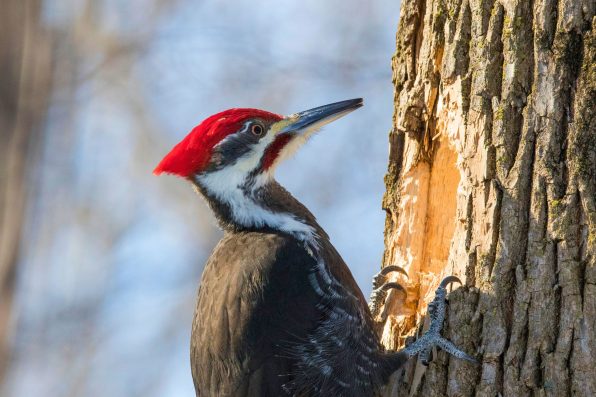The question of whether the ivory-billed woodpecker still exists is one that has been debated throughout the years. Some experts say that the bird is undoubtedly extinct, while others claim that a small number are out there somewhere.
The latest group to challenge the idea that the species is extinct is a team of ornithologists from the National Aviary in Pittsburgh, Pennsylvania.
The researchers published their study in the scientific journal Ecology and Evolution in May 2023. They collected data, including drone footage, that appeared to capture ivory-billed woodpeckers flying through the trees.
The last confirmed sighting of an ivory-billed woodpecker in the United States was back in 1944. It is believed that seven pairs of the birds had been nesting in a patch of Louisiana forest called the Singer Tract. A logging company that owned the land decided to clear the trees from the area, resulting in the destruction of the birds’ last home.
Additionally, a subspecies of ivory-billed woodpecker lived in the pine forests of Cuba until at least the 1980s. Sightings of the birds continued to trickle in through the 1960s and 1970s.
In the 1990s, no trace of them was observed, leading experts to believe that they went extinct around that time, especially since logging activity in the region had become increasingly heavy. Still, some people are holding out hope that reports of the species’ extinction are wrong.
In 2005, a team of researchers from the Cornell Lab of Ornithology published a paper stating that ivory-bills still lived in eastern Arkansas. They assembled evidence based on sightings, call recordings, and a grainy, seconds-long video clip.
However, when searches of the area were conducted, no proof of the woodpeckers was found. Many bird experts were unconvinced and believed that the video was of a different bird.
Ivory-bills were the world’s third largest woodpecker species. They measured over a foot-and-a-half long from beak to tail, so it seems like they would be hard to miss. Naturalists from the 19th and 20th centuries noted that the woodpeckers liked to hang out in groups in huge trees.

Sign up for Chip Chick’s newsletter and get stories like this delivered to your inbox.


